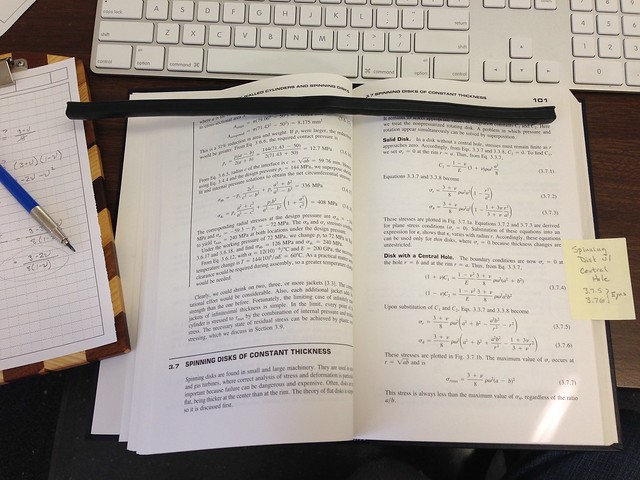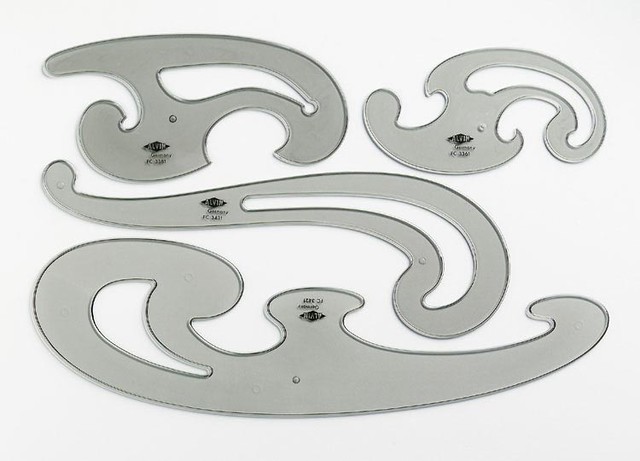Repurposed
November 20, 2012 at 10:09 PM by Dr. Drang
Today I was doin’ some cipherin’ as I looked through an old textbook and found myself using a tool that I’ve carried from office to office for over 30 years. In all those years, I’ve almost never used it for its intended purpose. In fact, I’m pretty sure it broke shortly after I bought it. And yet it’s never let me down in the alternate job I’ve assigned it.
I was reading a paper on the design of grinding disks (you only wish you had my job) and came across a formula for stress in a rotating disk that didn’t seem right. I grabbed out one of my favorite texts, Cook and Young’s Advanced Mechanics of Materials, flipped to the page with the right formula, and started noodling with the algebra to see why the paper’s formula was different.
A regular French curve is a flat plastic drafting tool with several edges of varying curvature. By combining different edges, a smooth curve of any shape can be drawn. It was the pre-computer Bezier curve.
Image taken from Genesis Art Supplies
A flexible French curve is a single tool meant to take the place of several regular French curves. The idea is to have a device that can be bent into any shape and traced.
In my experience, flexible French curves are better in theory than in practice. Mine is made of several thin mild steel strips set parallel to one another and enclosed in soft black plastic. When it was new, I could bend it into almost any shape (although it was never good at tight curves), but after a few bends back and forth, the strips inside the plastic broke in fatigue. This left kinks and bumps in the curve, rendering it useless for drafting.
But it could still be bent into a gentle, if bumpy, arc, and because its innards were steel, it was pretty hefty. Those two properties combined to make it perfect for holding books open—an essential device for graduate school. People who’ve seen it in action have often thought that was what it was made for.
I could buy a bookweight that would do the same thing and would certainly look classier. But a bookweight would cover up too much of the page and, more important, wouldn’t have the history of my old flexible French curve.
-
Turned out the paper’s author used a plane strain formulation instead of plane stress. For a thin disk! You’re stunned, I know. ↩



